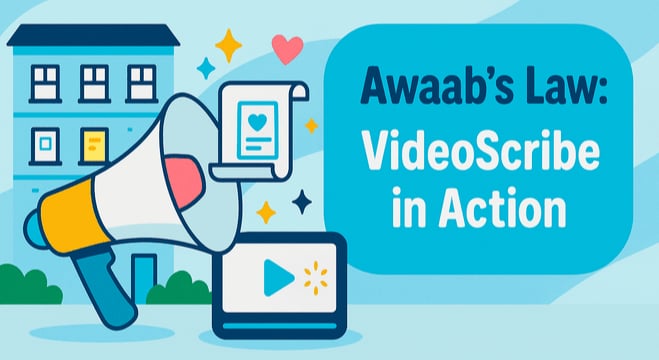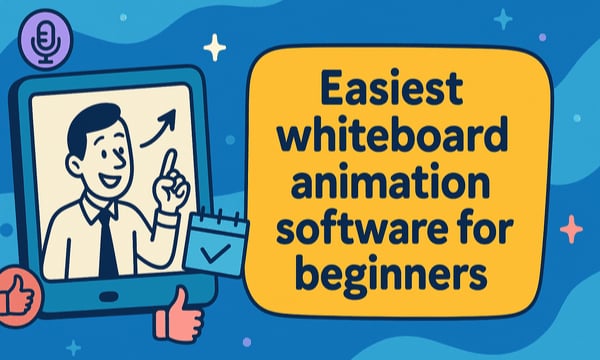We'll go as far as to say it's almost impossible not to have heard of TikTok. Whether you've downloaded the app yourself, the kids in your class won't stop talking about it or you watch the news, you're probably aware of the video platform sweeping the globe.
But the interesting thing about TikTok that makes it different to other social media platforms is it's especially popular with younger audiences. With so many kids finding TikTok videos irresistible it's a prime opportunity to learn more about student video preferences.
For instance, what does TikTok have over YouTube that makes it so engaging? And how can educators bring elements of TikTok videos into the classroom to boost results? It's these questions we'll be asking and sharing five key lessons you can learn from the success of TikTok to adopt into your educational videos.
But first, let's recap exactly what TikTok is and why it's such a phenomenon...
What is TikTok?
Simply put, TikTok is a social network that allows users to create and share 15 second videos. The content can cover any topic but it's become particularly famous for lip-syncing, dancing, challenges and funny content.
The app now has a staggering 800 million active users worldwide and 41% of them are aged between 16 and 24. TikTok grew so quickly with the help of regional influencers who started creating content to attract their target audiences. Now users spend an average of 52 minutes on the app each day, recording and watching videos.
Check out our video for more statistics and information on the rise of TikTok 👇
To create videos like this yourself, log in to VideoScribe or start a free 7-day trial today (no credit card needed).
So, what does that mean for educators? Here are 5 lessons you can learn from TikTok about what video content will resonate with your students.
1. They're fun!
Fundamentally, TikTok is really entertaining. Even the tutorials and 'how to' based content has an element of fun to it. Whether it's sharing jokes, featuring ironic music or adding filters there's lots of ways you can make your videos more engaging. It's this entertainment factor that keeps students watching for longer. Take this example below from a math teacher who uses Drake's 'Tootsie Slide' song to illustrate how quadratics work. This is next level creative!
It's these kinds of ideas that are great to incorporate into your classroom or remote learning video content. And don't feel like you have to show your face if you don't want to. You can create the same overall effect in tools like VideoScribe, using cartoons and illustrations to bring your content to life.
@iteachalgebra Welcome to parabolas, folks! ##tiktokteacher
♬ Toosie Slide - Drake
2. They push students to learn new digital skills and test their creativity
It's not just teachers who can benefit from creating educational videos. Why not set your students an assignment that involves presenting information back in a video. Not only is this a new way to switch up assignments but in doing so students will learn additional skills from storyboarding to video editing.
It's also a great opportunity to test their creativity and encourage them to think about educational content differently. Brooke Pavek is one such History student who now makes TikTok videos to explain historical events. You can see one of our favorites below.
@slaviccaesar I embarrassed myself for this vid, this better not flop 😤 ##historymemes ##history ##foryou
♬ if u use this sound ur cringe - baiiblade2
3. They make subjects approachable through step-by-step learning
The fact that TikTok videos are so short means that only one topic or idea can really be covered in each one. This in effect segments the learning into bite sized chunks that are much easier to digest. Which means that although you might end up consuming 20 minutes worth of content on TikTok, psychologically it feels like so much less than sitting down to watch one 20 minute long video.
This is probably the most important takeaway from TikTok. Attention spans have become so short that it feels much more approachable to learn from four 5 minute videos than one 20 minute video, even if they're covering the same information. Likewise, it's easier for our brains to focus on just one idea or concept per video.
So how could this be applied in an educational setting? It's really about chunking up your content into manageable pieces. A great example of this is Sarah Barker's English literature revision summaries where she analyzes the course texts chapter by chapter. Have you considered how you could chop your content up to make it more digestible?
4. They're on-demand
One of the major advantages of TikTok is that like YouTube, all the content is on-demand. That means users can watch videos as many times as they want to take the information in. This is particularly helpful if it's a tutorial on how to do or learn something more complicated, they can take the time and repeat the video as many times as needed.
Since the start of the pandemic lots of lessons that would have been delivered in person are now presented over live video tools like Zoom. While these definitely have their benefits, some students who need more time to process new information might feel like they can't keep up. Similarly other students might be ready to move onto the next step and live video just doesn't have the flexibility to cater for a range of abilities.
That's where TikTok style videos that are pre-recorded are so powerful and help you meet the needs of a broader range of students. We love this maths example from Marco Zamora on TikTok. But this would work equally well as part of a longer video on fractions with a voice-over to talk students through exactly what's happening on screen.
@markiroz_z ##mathtrick ##matematicas ##matematica ##mathematics ##tiktok ##foryoupages
♬ sonido original - elnicomejia
5. They show off personality
Lastly, TikTok encourages users to show off more of their personality through discussion and humor. Often creating a space where younger audiences can speak more freely about their concerns and worries.
This is particularly important in the current pandemic where students might be anxious about exams, their future or family. Creating videos that are more relaxed and show that at the end of the day you're not that different to them can really help students open up about problems they're facing. We love this story that perfectly illustrates the power of a little bit of humor.
To put these tactics into practice, start a free 7-day trial of VideoScribe!




.png)


![How to create animation magic [3-part guide to video success]](https://blog.videoscribe.co/hubfs/How%20to%20create%20animation%20magic%20guide%20VideoScribe.png)






COMMENTS